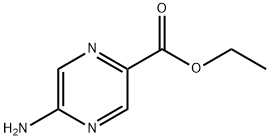Disulfide bonds are covalent bonds formed between the sulfur atoms of two cysteine amino acids in proteins. These bonds play a critical role in stabilizing the three-dimensional structure of proteins.
Related questions:
1.How do disulfide bonds affect protein folding?
2.What is the role of disulfide bonds in protein stability?
What is disulfide bonds?
Related Products More >
-
- 108-80-5
- USD 50.0000
- 50kg
-
- 108-78-1
- USD 4.5000
- 25kg
-
- 4559-86-8
- USD 750.0000
- 170kg
-
- 77182-82-2
- equest For Quotation
-
- 70131-50-9
- equest For Quotation



 沪ICP备2021018848号-5
沪ICP备2021018848号-5

A disulfide bond is a covalent bond formed between the sulfur atoms of two cysteine residues within a protein. These bonds play a critical role in stabilizing the protein's three-dimensional structure by linking different parts of the polypeptide chain. The sulfur atoms of two cysteine molecules (-SH groups) form a bond, resulting in a linkage that strengthens the overall protein structure. Disulfide bonds are important for maintaining the stability and proper folding of proteins, especially those secreted from cells or found in the extracellular environment. For example, in proteins like antibodies or enzymes, disulfide bonds are essential for maintaining their functional conformation.
1. How Do Disulfide Bonds Affect Protein Folding?
Disulfide bonds significantly influence protein folding by stabilizing intermediate folding states and ensuring the protein reaches its correct, functional three-dimensional shape. During protein synthesis, disulfide bonds form between cysteine residues that are spatially close to one another in the folded protein structure. These bonds help secure regions of the protein, preventing misfolding or aggregation. For example, the enzyme ribonuclease A requires disulfide bonds to stabilize its structure and function properly. In extracellular proteins, like antibodies, disulfide bonds are especially important because they stabilize the protein in the potentially harsh extracellular environment, helping maintain its functional activity.
2. What Is the Role of Disulfide Bonds in Protein Stability?
Disulfide bonds contribute to the stability of proteins, especially those exposed to challenging conditions. Proteins such as collagen in connective tissue rely heavily on disulfide bonds to maintain their structure and strength. These bonds stabilize the triple-helix configuration of collagen, providing tensile strength. In contrast, proteins in the cytoplasm, such as those involved in intracellular processes, tend to be less reliant on disulfide bonds due to the reducing environment inside cells. However, some proteins, like insulin, require disulfide bonds for their function. The hormone insulin’s two peptide chains are held together by disulfide bonds, and this structural stability is vital for regulating blood glucose levels. Disulfide bonds are also essential for the stability of recombinant proteins used in biotechnological applications, including pharmaceuticals, where the correct folding is critical for activity.
In biology, disulfide bonds are commonly found in proteins. They are formed by the oxidation of two cysteine residues, where the thiol groups (-SH) of the cysteines react to form a -S-S- bond. This bond helps to stabilize the three-dimensional structure of proteins, contributing to their folding and overall shape. It can also connect different polypeptide chains or create loops within a single chain.
In organic chemistry, disulfide bonds can be formed and broken under specific conditions. They are used in some synthetic reactions and can be involved in the cross-linking of polymers, enhancing the material's mechanical properties and stability. Overall, disulfide bonds are important for the structure and function of many biological molecules and have applications in various chemical and materials science fields.